How To Choose The Right pH Meter For Your Application

pH is one of the most widely measured parameters for many applications and industries. This diversity has resulted in a confusing array of styles and types of pH meters to choose from when you need a new device.
When you begin your search for the ideal pH meter for your application, you’ll soon discover that a “one size fits all” approach won’t work. So our scientific team put their heads together and came up with five things that will help you on your journey – plus, we threw in a handful of handy tips for good measure.
1. Choose Your Style
If you can settle on a pH meter style, you will reduce the pool of potential candidates significantly, and your search for the perfect pH meter will be much easier. Choose your meter type from the three main pH meter designs detailed in Figure 1 (below).
Pen Tester |
Handheld Meter |
Benchtop pH Meter |
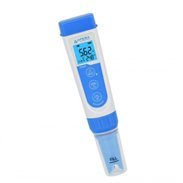 |
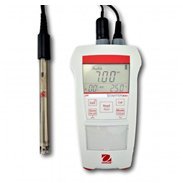 |
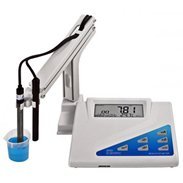 |
|
Description: Pen testers are pocket-sized instruments incorporating the pH meter, a display and an electrode all in one unit. Advantages: The handy design of pen testers makes these devices exceptionally easy to transport and use when you’re on the go. Uses: There are many Pen pH Tester applications in the construction, hydroponics, food manufacturing, pool, or spa maintenance industries. |
Description: Slightly larger than pen testers, handheld meters typically sport a more rugged design. This type has the electrode separate from the meter. Advantages: Handheld models typically have electrodes you can interchange for different applications. For example, change from a general use to a specific use electrode. Uses: |
Description: Desk or wall-mounted benchtop meters are the largest of the three main styles of pH meters. Advantages: Generally, benchtop meters have the highest degree of accuracy and the most features Uses: Benchtop pH meters are commonly used in food processing facilities, quality assurance laboratories, water testing facilities and environmental testing laboratories. |
Figure 1 The three main styles of pH meter
|
Scientists’ Tip: Start your pH meter search by selecting a style or type of pH meter. |
2. Accuracy
As with all scientific equipment, accuracy comes at a price. The precision of pH meters can range anywhere from ±0.1pH down to ±0.001pH. Find a meter that balances your accuracy requirements within your budgetary constraints. Lower accuracy is often acceptable for general, everyday use, whereas greater accuracy is needed for research and quality control.
|
Scientists’ Tip: Check your industry standards and your organisation’s internal quality control specifications to determine the accuracy level you need from your pH meter. |
3. Electrode Vs Sample Type
The most common and increasingly popular pH electrode variety is the glass bulb electrode. It’s often chosen by professionals primarily because of its ruggedness and affordability. However, many tasks need a specialised electrode design. Here are some examples:
- Semi-solid products and substances
- Soils
- Solutions with a high amount of debris that can clog your electrode
- Where substances are not complete liquids (e.g., fabrics or skin)
- Chemicals; and
- Materials in environments where glass usage must be kept to a minimum (e.g., for health and safety reasons – like food processing).
See Figure 2 illustrates the variety of pH meter electrodes.
General Use |
General Use – Flat |
Soil |
Semi-Solid Foods |
Chemicals |
Skin/Fabric |
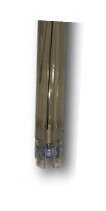 |
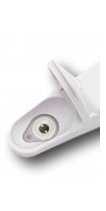 |
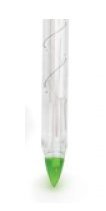 |
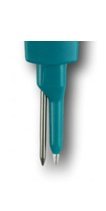 |
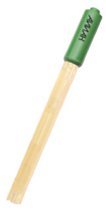 |
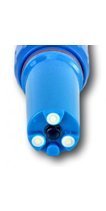 |
Figure 1 Examples of pH electrodes tips suited for specific applications
|
Scientists’ Tip: Determine your requirement for a general of specific use pH electrode. |
4. Calibration
Regular calibration of your pH meter will guarantee accurate and consistent readings. The frequency of calibration required will depend on how often you operate your device. If you use your meter every day, you should calibrate it daily. If you use it a few times a week, weekly calibration will suffice. You can perform the calibration of most pH meters in-house. Some devices will alert you when calibration is required, and others will not.
|
Scientists Tip: Consider purchasing a meter that can perform a two-point calibration (as a minimum) and calibrates to standards that shoulder your expected measurement range. For measurements covering a wide pH range or where precise results are required, are you will need to consider further calibration points. |
5. Automatic Temperature Compensation
Automatic Temperature Compensation (ATC) is quickly becoming an essential feature for most pH meters. While ATC is not a vital feature, it does increase both the accuracy and speed of your pH measurements.
|
Scientists’ Tip: Instrument Choice recommends pH meters with ATC – they save time, reduce mistakes and increase your accuracy. |
6. Other Important Considerations
- Will you measure pH only, or do you intend to quantify other parameters such as TDS and conductivity? It may be worth considering a multiparameter tester.
- Is the electrode replaceable? pH electrodes are consumable items, and depending on your use, may require replacement every 6-24 months. If your budget allows, look for pH meters with replaceable electrodes. Replacement electrodes are a fraction of a new meter’s price, which will save you money in the long run!
- Who will be using the pH meter? Consider the skill set of the persons expected to use the pH meter and what you would like them to achieve. A laboratory-grade benchtop meter with a complex interface would be overkill for everyday use. On the other hand, a basic meter might not cut it in a research role.
- How rugged does your pH meter need to be? If using your pH meter in or around wet or dusty environments, consider a purchase with a high IP rating to protect against water ingress, dust and spills.
Conclusion
With well over 300 pH meters available at Instrument Choice, choosing the best device for your application can seem an impossible task. Follow the five steps above to be certain of finding the best pH meter for your unique application.
Browse the complete range of pH meters here
Want more information about pH meters or need further assistance? Speak with an expert scientist! Call 1300 737 871 or email [email protected].
Also interesting
The Center521 is equipped with Bluetooth Wireless Technology, allowing users to wirelessly monitor collected temperature measurements in real-time or transfer logged data to computers or mobile devices.
This how-to guide details the right way to connect your new 4 Channel Data Logger to the TestLink app.
Get the most from your logger; get expert advice on how to connect your Center521 to Bluetooth on your mobile here!

At Instrument Choice, we proudly stock over 150 brands of scientific instruments and laboratory equipment. To help you find the best products to suit your application, our scientists regularly spotlight products so you can better find the best for your needs.
This edition focuses on the Atago “PAL” series, an impressive product line up with meters to measure Brix, salinity, various chemicals, and many more.
Find your new pocket PAL here


